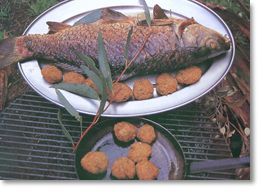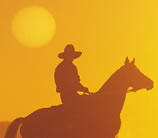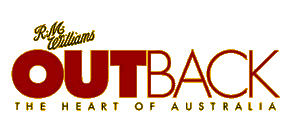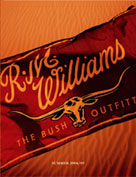DINKUM DINING
Big water barbie
Our nomadic chef Adrian Millman visits the ACT to sample a not-so-respected introduced species from the Murrumbidgee River.
 With
justification the carp is called the "river rabbit". Like the rabbit, it is an introduced species, causes massive environmental
damage and crowds out populations of native species.
With
justification the carp is called the "river rabbit". Like the rabbit, it is an introduced species, causes massive environmental
damage and crowds out populations of native species.
But, unlike the rabbit, it is rarely considered suitable for the Australian dining table.
This a pity because hunting rabbits for food, particularly during the Depression, helped to control populations until the advent of myxomatosis and calicivirus.
While there is little consumer demand for carp, they continue to wreak havoc on river systems, particularly in the Murray-Darling Basin.
 They
increase turbidity, feed on molluscs, crustaceans, insect larvae, plankton
and seeds and carry the anchor worm that harms native fish such as the Murray
cod and silver perch.
They
increase turbidity, feed on molluscs, crustaceans, insect larvae, plankton
and seeds and carry the anchor worm that harms native fish such as the Murray
cod and silver perch.
With females laying up to a million eggs a year, the carp's potential for devastation is immense.
The ACT government has launched a rehabilitation program on the section of the Murrumbidgee River that runs within its borders.
ACT experts back moves to encourage more people to eat carp and would welcome any attempt to process the fish for export.
The ACT's Urban Services Minister Brendan Smyth invited me to prepare a meal in the scenic surrounds of Pine Island on the Murrumbidgee near its junction with the Naas River, 30 km south of Canberra.
Weighed down with anti-carp propaganda and possessing a lifelong love
of unspoilt bush, it was an assignment I tackled with gusto. ![]()
Full story Issue 7, October-November 1999


